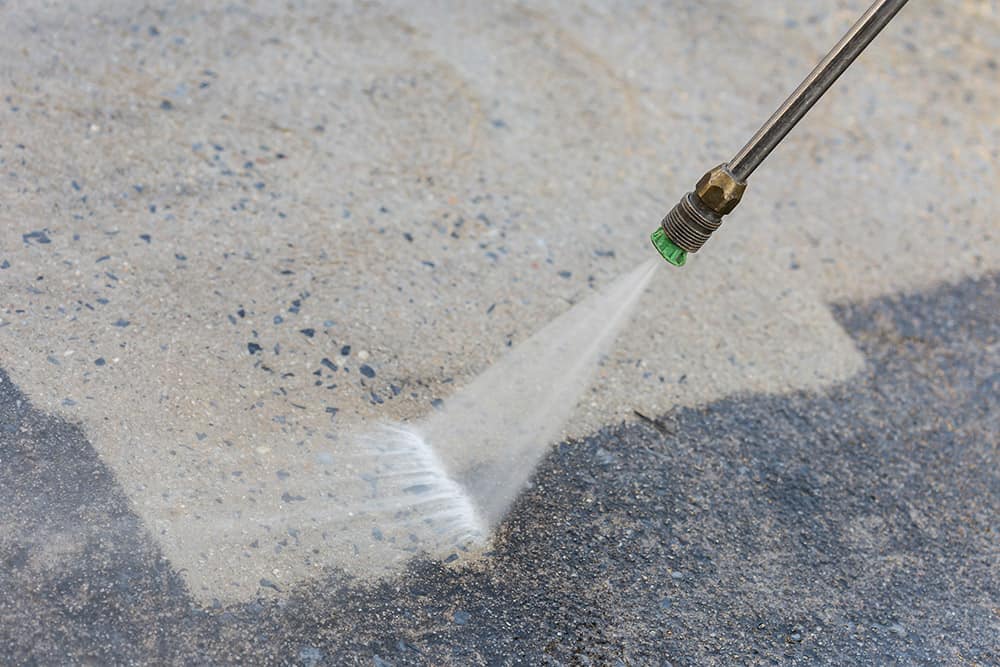
Whether it’s from a leaky engine, a mishandled oil change, or a neighbor’s jalopy dripping in your driveway—oil stains are one of the most stubborn and frustrating things to deal with on concrete. They soak in deep, spread wide, and don’t just wash away with a hose.
So here’s the big question: Can pressure washing remove oil stains?
The answer: Yes, but not always on its own. You’ll likely need to pair it with a degreaser or specialized cleaning solution. 💧🧼
Let’s break down how to tackle oil stains properly using pressure washing—without damaging your surface or wasting time.
🛑 Why Oil Stains Are So Tough
Oil is hydrophobic—it repels water—and concrete is porous, which means oil sinks into it like a sponge. Over time, oil stains:
- Darken the surface permanently if left untreated
- Weaken concrete sealants or coatings
- Become slip hazards
- Reduce curb appeal 🏚️
So, while a pressure washer can blast off surface-level oil, it doesn’t dissolve what’s soaked deep inside unless you break the oil down chemically first.
🧴 The Power Combo: Pressure + Degreaser
To remove oil effectively, you need a two-step process:
- Break down the oil with a degreaser or detergent
- Pressure wash to lift and rinse it away
✅ Here’s what works best:
- Citrus-based degreasers (eco-friendly and powerful)
- Concrete-specific oil removers
- Heavy-duty commercial degreasers
- Homemade paste (baking soda + dish soap)
🚫 Avoid bleach—it doesn’t break down oil and may discolor surfaces.
🧽 Step-by-Step: How to Remove Oil Stains with a Pressure Washer
Step 1: Blot Fresh Oil (if applicable)
- If the stain is fresh, blot it with paper towels or kitty litter
- Absorb as much as possible before adding water
Step 2: Apply a Degreaser
- Spray or pour degreaser directly on the oil spot
- Let it sit for 15–30 minutes to soak in and break up the oil
- Scrub with a stiff bristle brush for extra penetration
🧠 Pro tip: Apply when the concrete is cool and dry for best results.
Step 3: Set Up Your Pressure Washer
- Use a unit rated between 2,500–3,500 PSI
- Attach a 15° (yellow) or 25° (green) nozzle
- Maintain a distance of 12–18 inches from the surface
💡 Optional: Use a surface cleaner for wide, even cleaning
Step 4: Wash the Area
- Spray in overlapping strokes
- Rinse thoroughly
- Reapply degreaser and repeat if needed
Some stains may need multiple treatments—especially if they’ve been sitting for weeks or months. ⏳
Browse Amazon Here For Popular Pressure Washers And Accessories
❗What If the Stain Still Won’t Budge?
For ultra-stubborn oil spots, try:
- Poultice paste: A mix of powdered absorbents + solvent
- Concrete etchers (use cautiously—they strip the surface)
- Steam pressure washers (heat helps break down oil)
In worst-case scenarios, you might only lighten the stain. But even a faded mark looks 10x better than a fresh, greasy blot. 👍
🌿 Eco-Friendly Tips
Oil and degreaser runoff can harm plants and waterways. Be sure to:
- Use biodegradable cleaners
- Block off storm drains while cleaning
- Rinse nearby grass with clean water afterward
- Contain runoff if possible using absorbent pads or mats
♻️ A little prep goes a long way toward eco-conscious power washing.
🧠 Final Thoughts
Pressure washing can absolutely remove oil stains—but you’ll get the best results when you pair it with a degreaser and some elbow grease. 💪
To recap:
- ✅ Use a strong degreaser first
- ✅ Let it soak and scrub with a stiff brush
- ✅ Follow up with high-pressure spray
- 🌀 Repeat if necessary for old stains
- 🚫 Avoid using only water—it won’t be enough
Tackle that oil before it becomes a permanent part of your concrete. With the right tools and a little patience, you can restore your driveway, garage, or patio to a clean, stain-free finish. 🏡🧽✨
Browse Amazon Here For Popular Pressure Washers And Accessories






